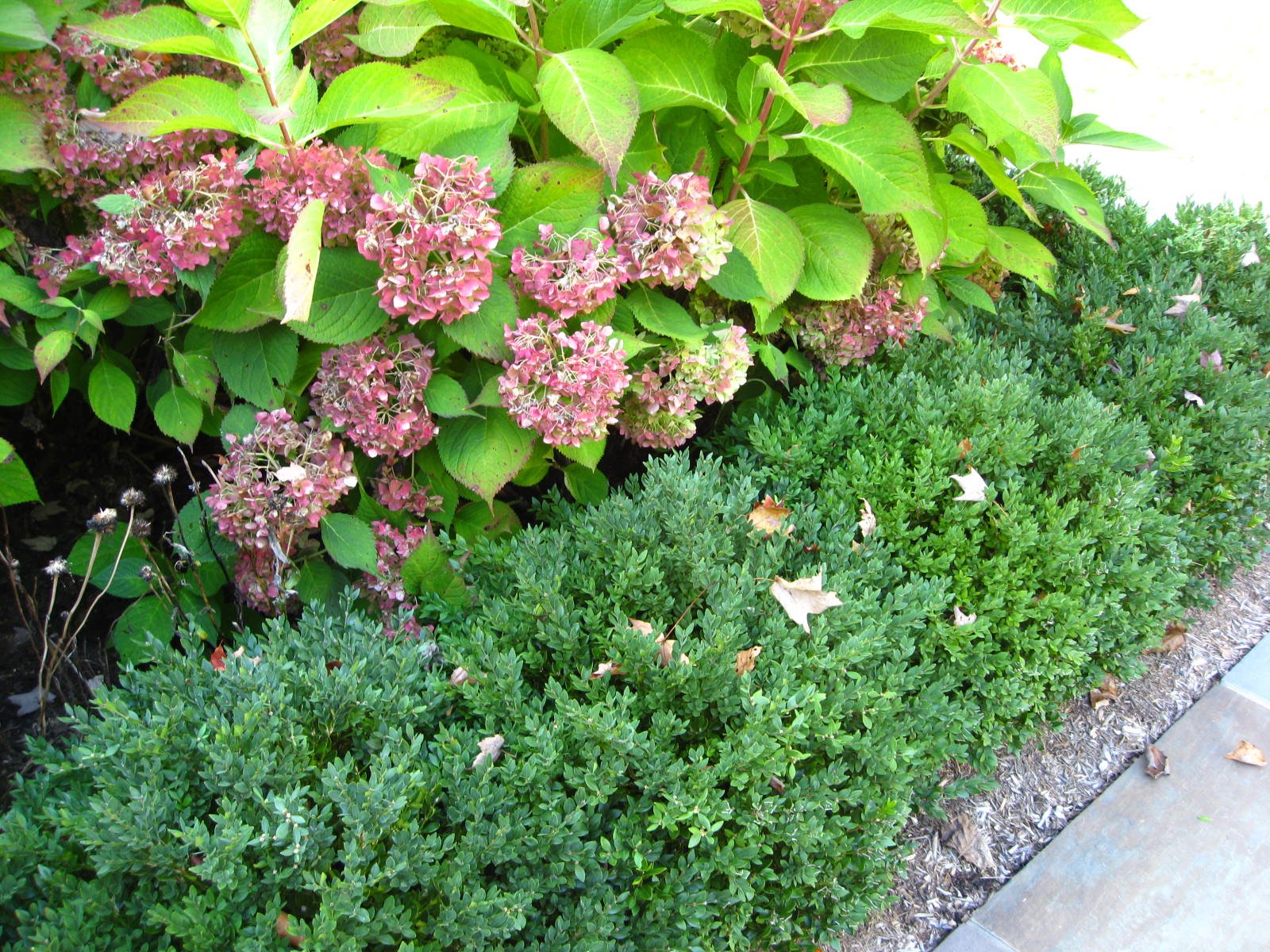Boxwood has been used since antiquity in gardens throughout the world. It has long been valued for its permanence in the landscape, extremely hard wood, and its medicinal value. This is a long-lived plant, many specimens living considerably more than 100 years.
Boxwoods are native to western and southern Europe, and portions of Asia, Africa, South America, Central America, and the Caribbean. There are no boxwoods native to North America. Boxwood is the common name for the genus Buxus, and a family relative of Pachysandra.
Although there are about 90 species of boxwood, just three of them, and their hybrids, make up the majority of boxwood used in landscapes in the United States today. Boxwood was introduced to North America from Europe in the mid-1600’s. According to The American Boxwood Society, the first planting was around 1653 at Sylvester Manor on Shelter Island, New York, using boxwood brought over from Amsterdam.
Boxwood has a history immersed in myths and truth: these plants were in use among the Egyptians, Greeks and Romans. To the Greeks, boxwood signified strength. Boxwood sprigs have been found in the tombs of Romans. To dream of boxwood was said to foretell long life. Boxwood is one of the few woods heavier than water, and is used for carving, making woodcuts, and constructing precision instruments. Traditionally used in formal gardens, most commonly for hedging, topiaries, and containers, boxwood is an excellent choice for edging, screening and mass foundation plantings. Boxwood cultivar choices offer a variety of shapes, including rounded, columnar, upright, pyramidal or spreading, with sizes ranging from 1-20 feet tall and 2-8 feet wide.
Deer do not browse boxwood due to distasteful or poisonous alkaloids in the leaves. It is one of the few evergreen shrubs that is usually not damaged by deer and a reason for its widespread use in our area. Unfortunately, when a single plant variety is overused, it becomes vulnerable to disease and insect pests. In reference to a study by the University of California, entomologist William Wetzel said, "A monoculture is like a buffet for plant-eating insects where every dish is delicious.” And a delicious buffet for pathogens, as well.
“Winter burn” is a common problem of evergreens, including those with “broad leaves”, like boxwood. Leaves do not actually burn but rather dry up. Leaves turn yellow or brown in response to low soil moisture, freezing temperatures and blowing wind. Nurturing healthy boxwood is the best way to protect against insect, disease or winter damage, and in spite of these potential problems, boxwood remain a popular and easy to grow shrub.
Cultural Practices for Boxwood Health
Light requirements: Boxwood will grow in full sun, but many prefer part shade.
Moisture: Moist, well-drained soil is best. Boxwood do not like wet feet and are highly susceptible to root rot. Once established, they’re drought tolerant and only need water after an extended period of time with no rain.
Mulching: Boxwood are shallow-rooted and benefit from a thin layer of mulch to protect the roots. A thick layer of mulch should be avoided as it may encourage roots to grow above the soil surface, putting them at risk of damage when dried out.
Shearing, pruning and thinning: A common belief is that it is mandatory for boxwood to be drastically sheared into balls and flat-topped hedges for optimum maintenance. This is actually incorrect. Shearing encourages leaf growth only at the ends of branches, and over time, continual shearing transforms boxwood into a shell of outer leaves with a dead center. With every shearing each branch becomes four to six new branches. This occurs because the apical (dominant) buds have been eliminated, causing plant hormones to inhibit the buds below from growing. Because sunlight and air can’t reach the interior, the plant becomes susceptible to disease. Boxwood should have a green interior, with leaves all the way up the branches. Minimal shearing (no more than once a year) is essential to a healthy boxwood.
Why prune? For aesthetics and health. Boxwood can be pruned by hand to shape them to improve the overall appearance. Branches that are too long can be cut back from inside the shrub. This is “selective pruning”, as opposed to “shearing”, which is non-selective. When shaping, taper them so that the bottom is broader than the top, to ensure the entire plant will be exposed to sunlight.
Prune dead branches, remove any debris or fallen leaves from the interior, and thin the plant by removing some of the branches from the center of the plant. Thinning and cleanup allows sunlight and air to reach the interior of the plant which promotes new growth, helps to prevent disease, and increases the longevity of boxwood.
To learn more:
www.boxwoodsociety.org/abs_care
www.saundersbrothers.com/_ccLib/attachments/pages/Boxwood+Guide+copy.pdf

